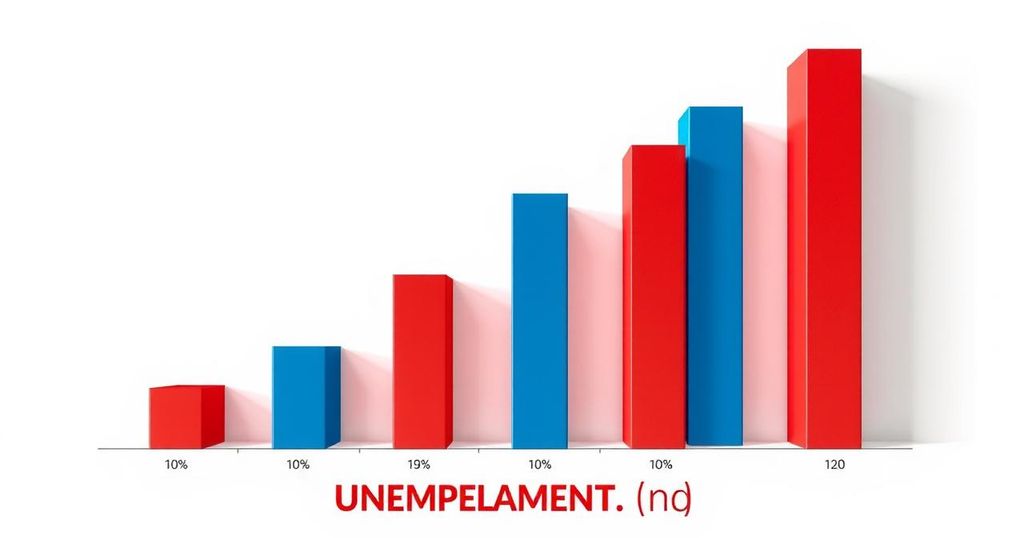Argentina’s Unemployment Rate Rises Amid Economic Challenges

Argentina’s unemployment rose to 6.4% in Q4 2024, up from last year but down from Q3. Women face higher joblessness rates. The hotel industry is affected by declining foreign tourists. Despite reducing inflation under President Milei, economic activity is stagnant, prompting discussions about securing an IMF loan to stabilize reserves.
In the last quarter of 2024, Argentina experienced an increase in unemployment, reaching 6.4%, which reflects a rise of 0.7 percentage points from 5.7% in the same quarter of 2023, according to the National Institute of Statistics and Census (Indec). This figure is slightly lower than the 6.9% reported in the previous quarter. The Greater Buenos Aires area recorded the highest unemployment at 7.1%, contrasted with Patagonia’s 4%. Notably, unemployment affected more women (6.9%) than men (6.1%).
The report indicates that 72.5% of the unemployed individuals have been without work for less than a year, while 27.6% have remained jobless longer. Additionally, labor market pressure, which comprises the unemployed, underemployed, and job seekers, increased to 29.4%, up by 2 points year-on-year. Approximately 1.47 million Argentines are unemployed, representing an increase of 180,000 compared to the previous year.
In February 2025, hotel occupancy in Argentina dipped by 0.2% year-on-year, with 1.97 million travelers, as foreign tourists faced challenges due to the appreciation of the local peso against the US dollar, rendering local prices unaffordable by international standards. While resident travelers increased by 4.6%, non-residents decreased by 14.7%. The total number of overnight stays declined to 5.6 million, equating to a 1.2% decrease, with a rise in resident stays and a significant drop in non-residents.
Buenos Aires province topped the list with 27.8% of overnight stays, followed by Patagonia with 22.6%. The average length of hotel stays was 2.8 nights, whereas stays in parahotels reached 3.4 nights. Key tourist destinations included Mar del Plata, San Carlos de Bariloche, and Villa Carlos Paz.
Under President Javier Milei’s Libertarian government, the inflation rate decreased from 211% in 2023 to 117% in 2024. However, economic activity remains stagnant due to a lagging dollar, and the Central Bank (BCRA) reserves continue to fall as the government intervenes to stabilize currency values. To address these challenges, the administration aims to secure an IMF loan by mid-April to bolster reserves amid rising dollar demand.
Urban Argentina is home to 29.8 million individuals, with the economically active population (EAP) comprising 14.5 million, of which 13.6 million are employed while nearly one million are unemployed but actively seeking work. Among the unemployed, 71.2% have completed high school, and only 28.9% have attended college, irrespective of graduation status.
In summary, Argentina faces rising unemployment rates, particularly impacting women and those in urban areas. The hotel industry is also struggling due to decreased foreign tourism. While the current government has made strides in reducing inflation, economic activity remains subdued. The need for an IMF loan underscores the precarious economic situation. The demographics of the unemployed reveal a significant portion with high school education, highlighting potential areas for workforce development.
Original Source: en.mercopress.com








